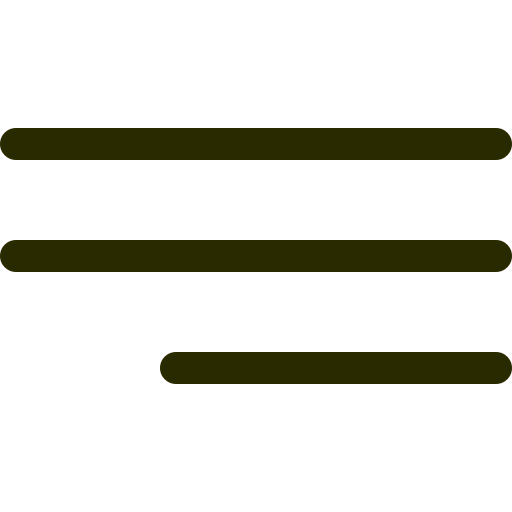Building upon the foundational exploration presented in Unlocking Complex Patterns: From Math to Modern Design, we delve deeper into how natural patterns serve as a boundless source of inspiration across various artistic and technological disciplines. Nature’s intricate designs, shaped by evolutionary processes and mathematical principles, continue to challenge and inspire creators, leading to innovations that blend science, art, and technology seamlessly.
1. Understanding Nature’s Intricate Patterns: A Source of Artistic Inspiration
a. The coexistence of complexity and simplicity in natural patterns
Natural patterns often embody a paradox: they are simultaneously complex and simple. Take the mesmerizing spirals of sunflower seeds or the fractal branching of trees. These patterns demonstrate how simple rules—like repeated iterations or growth algorithms—can produce astonishingly intricate designs. This duality encourages designers to seek minimalist frameworks that, when expanded, reveal layers of complexity, fostering innovation rooted in simplicity.
b. Iconic natural patterns and their visual impact
Examples such as the honeycomb structure of beehives, the zebra’s stripes, and the tessellations of turtle shells exemplify natural patterns that captivate through their visual harmony and efficiency. These patterns not only serve biological functions—like optimizing space or camouflage—but also influence architectural facades, textile designs, and digital interfaces, creating aesthetic experiences grounded in nature’s logic.
c. The subconscious influence of natural patterns on human creativity
Research indicates that exposure to natural patterns can subconsciously enhance creativity and problem-solving skills. The human brain is wired to recognize and respond to these patterns, which explain their pervasive presence in art, architecture, and branding. This innate attraction underscores the importance of integrating natural motifs into design to evoke emotional resonance and intuitive understanding.
2. From Mathematical Models to Artistic Interpretation: Bridging the Gap
a. The role of mathematical principles in natural pattern formation
Mathematics provides the foundation for understanding how natural patterns emerge. Fractal geometry, for instance, explains the self-similar structures seen in coastlines, clouds, and mountain ranges. The Fibonacci sequence underpins phyllotaxis—the arrangement of leaves and seeds—demonstrating how mathematical ratios influence natural aesthetics.
b. Translating abstract mathematical concepts into visual art and design
Artists and designers interpret mathematical principles through visual languages—using algorithms to generate organic forms, fractal patterns, or symmetry. Computer-aided design (CAD) tools facilitate this translation, enabling the creation of complex patterns that mimic natural fractals or tessellations, enriching both aesthetic appeal and structural efficiency.
c. Case studies of artists and designers inspired by mathematical patterns
| Artist/Designer | Pattern Inspiration | Application |
|---|---|---|
| M.C. Escher | Mathematical tessellations and impossible objects | Architectural murals, book illustrations |
| Neri Oxman | Algorithmic biology and natural growth patterns | Innovative architecture and wearable tech |
| Zaha Hadid | Fluid geometries inspired by fractals | Architectural masterpieces and urban design |
3. Biological Algorithms and Their Application in Design Innovation
a. Nature’s “algorithmic” processes: fractals, symmetry, and tessellations
Biological systems employ algorithms—self-organizing rules—that produce repeating motifs like fractals, symmetrical structures, and tessellations. These processes optimize resource distribution, structural stability, and adaptability, offering valuable templates for sustainable design.
b. Bio-inspired algorithms as a design toolkit (e.g., biomimicry)
Biomimicry leverages biological algorithms to develop innovative solutions. For example, the study of termite mounds has inspired passive cooling systems in architecture, while the microstructure of lotus leaves informs self-cleaning surface technology. These bio-inspired algorithms foster efficiency and resilience in design.
c. Practical examples of biologically inspired innovations in architecture and product design
- Velcro, inspired by burrs’ hooks attaching to fabric
- Sharkskin-inspired antibacterial surfaces
- Self-healing concrete mimicking biological tissue repair
4. The Aesthetic Power of Organic Patterns in Modern Design
a. How organic, non-uniform patterns evoke emotional responses
Organic patterns, characterized by irregularity and asymmetry, resonate on a subconscious level, evoking feelings of comfort, authenticity, and connection to nature. Designers harness these patterns to create environments and products that foster well-being and emotional engagement.
b. Balancing randomness and structure for visual harmony
Achieving harmony involves integrating controlled randomness within structured frameworks. Techniques like generative design algorithms allow creators to introduce variability while maintaining overall coherence, resulting in designs that feel natural and dynamic.
c. Techniques for integrating natural patterns into digital and physical design processes
- Using fractal generation software for organic textures
- Applying biomimicry principles in material selection and form development
- Employing AI-driven parametric modeling to simulate natural variability
5. Advanced Technologies Unlocking Natural Pattern Replication
a. Computational tools for analyzing and recreating complex natural patterns
Tools like MATLAB, Python libraries, and specialized fractal software enable precise analysis and replication of natural patterns. These allow designers to extract mathematical algorithms from biological forms, facilitating their application across scales.
b. 3D printing and generative design inspired by natural forms
Additive manufacturing techniques, combined with generative algorithms, produce complex, organic geometries that would be difficult to craft manually. This synergy accelerates innovation in architecture, fashion, and product design, bringing natural complexity into tangible forms.
c. The future of AI in discovering and applying natural pattern algorithms
Artificial Intelligence advances enable the discovery of hidden patterns within biological data sets, leading to novel algorithms that mimic natural efficiency. Machine learning models can generate unprecedented designs, pushing the boundaries of aesthetic and functional possibilities.
6. The Cultural Significance of Natural Patterns in Design Evolution
a. Traditional uses of natural motifs across cultures
From Islamic geometric art to Native American textile patterns, natural motifs have historically conveyed cultural narratives and spiritual symbolism. These motifs exemplify how cultural context shapes the interpretation and application of natural patterns, enriching their aesthetic value.
b. Evolving perceptions of natural patterns in contemporary aesthetics
Today, natural patterns are embraced in minimalism and eco-friendly design, reflecting a societal shift towards sustainability and authenticity. Digital media amplify these motifs, fostering a global aesthetic that values organic imperfection and ecological consciousness.
c. How cultural context influences the interpretation and application of natural patterns
Designers adapt natural motifs to local cultural symbols, creating hybrid aesthetics that resonate with diverse audiences. Understanding this interplay ensures that natural patterns are employed meaningfully, respecting cultural heritage while innovating.
7. Challenging Perceptions: When Natural Patterns Break the Rules
a. The beauty of imperfection and asymmetry in design inspired by nature
Natural irregularities—like the asymmetrical petals of orchids or the uneven cracks in dried mud—highlight the aesthetic value of imperfection. Embracing asymmetry fosters authenticity and uniqueness in design, challenging traditional notions of perfection.
b. Embracing chaos and randomness as creative tools
Incorporating elements of randomness can lead to innovative outcomes. Techniques such as stochastic modeling allow designers to introduce controlled chaos, resulting in designs that feel organic and unpredictable yet harmonious.
c. Case studies of innovative designs that defy traditional pattern expectations
- The Deconstructed Architecture of Daniel Libeskind
- Abstract expressionist paintings inspired by chaotic natural forms
- Avant-garde fashion incorporating asymmetrical motifs
8. Connecting Back to Mathematical Complexity: The Underlying Framework of Natural Artistry
a. Revisiting the mathematical underpinnings of natural pattern formation
From chaos theory to the mathematics of growth, understanding these frameworks enhances our ability to mimic and innovate. Recognizing the algorithms behind natural patterns allows designers to generate complex forms with precision and purpose.
b. How understanding these fundamentals deepens artistic and design innovation
Deep knowledge of mathematical principles empowers creators to push boundaries, creating designs that are not only inspired by nature but also rooted in its underlying order. This fusion fosters sustainable, efficient, and aesthetically compelling solutions.
c. The continuum from mathematical complexity to aesthetic mastery
Ultimately, the journey from abstract formulas to captivating visual forms exemplifies how mathematical complexity fuels aesthetic mastery, bridging the gap between science and art in continuous cycles of innovation.
9. Conclusion: Synthesizing Nature’s Patterns into Future Design Paradigms
a. The ongoing dialogue between science, art, and technology
Integrating insights from biology, mathematics, and digital technology fosters a holistic approach to design. This interdisciplinary dialogue drives the creation of resilient and inspiring environments and products that reflect nature’s inherent wisdom.
b. Encouraging interdisciplinary approaches for groundbreaking design solutions
Collaboration among scientists, artists, and technologists unlocks novel applications of natural patterns, from adaptive architecture to sustainable materials, ensuring that future innovations honor both function and beauty.
c. Returning to the core idea: harnessing complex natural patterns to inspire limitless innovation
As we continue to explore and understand the depths of natural complexity, the potential for groundbreaking design solutions expands infinitely. By embracing the organic principles embedded in nature, creators can craft a future where technology and artistry coexist harmoniously, driven by the timeless patterns that govern our world.



0 Comments